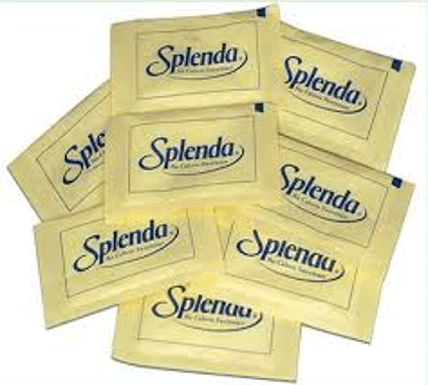시드니의 킹스 크로스(Kings Cross) 중심부에 자리잡은 트렌디한 티 바에 들어서면 방문객들은 전 세계에서 공수한 희귀한 다양한 종류의 차와 블렌드를 즐길 수 있습니다.
녹색 배경으로 차를 따르고 있는 편집 이미지.
내부에서는 과학을 전공하고 차 전문가로 전향한 캐시 장(Cathy Zhang)이 역사적으로 쾌락주의로 알려진 동네에 그러한 장소를 열 기회에 대해 반성하며 차 자체의 발견과 유사점에 주목합니다.
“차의 발견은 실수였습니다. 이 가게를 여는 것도 실수였습니다.”라고 그녀는 말합니다.
고대 중국에서 차 한 잔을 마시는 중국인의 삽화.
차의 정확한 기원은 불분명하지만, 한 전설에 따르면 수천 년 전 중국 황제의 뜨거운 물 컵에 길 잃은 찻잎이 들어가 우연히 원시적인 “양조주”가 만들어졌다고 합니다.
또 다른 이야기는 실수로 독살당했지만 바람이 입에 작은 잎사귀를 불어넣은 후 되살아난 중국 농부에 대한 이야기입니다.
“인생에서 아름다운 모든 것은 실수로 발생합니다. 우연히 발생합니다.”라고 Cathy는 말합니다.
차를 처음으로 맛보는 기쁨을 누린 사람이 누구였든, 차는 앞으로 수세기 동안 어떻게 세계 정치를 재편하여 물 다음으로 세계에서 가장 인기 있는 음료로 자리매김할지 예상하지 못했을 것입니다.
차를 준비하는 차 전문가 캐시 장의 편집 사진.
따라서 차 애호가와 순수주의자에게 차 또는 모닝 컵파가 음료 그 이상인 이유는 무엇입니까?
‘옳고 그른 길은 없다’
차나무의 정식 명칭인 카멜리아 시넨시스(Camellia sinensis)의 그림.
다양한 전설에도 불구하고, 기록에 따르면 차 또는 공식적으로 알려진 식물인 Camellia sinensis는 수천 년 전에 중국에서 유래되었습니다.
그러나 그것이 항상 음료는 아니었습니다. 초기 기록에 따르면 찻잎은 스스로 씹거나 약과 같은 치료 효과를 위해 수프와 죽에 첨가되었습니다.
“전통적으로 승려들은 집중하고 더 잘 명상할 수 있도록 마음을 비우기 위해 차를 마셨습니다.”라고 Cathy는 말합니다.
수년 동안 이 “약”은 약 1,500년 전에 음료로 자리잡을 때까지 녹차에서 산화된 홍차에 이르기까지 수많은 변형 변화를 거쳤습니다.
다양한 종류의 차를 보여주는 그래픽: 녹차, 홍차, 우롱차, 백차.
수년 동안 준비의 표준 방법은 신선한 차를 갈아서 뜨거운 물과 혼합하여 음료를 만들 수 있는 “케이크”에 포장하는 것이었습니다.
이 음료는 매우 빠르게 황제와 예술가들이 선택한 음료가 되었고 대중 문화와 토론의 주제가 되었습니다.
신선한 잎으로 준비 중인 녹차의 이미지.
차를 끓이는 전통적인 방법을 시연하는 Cathy는 차를 여러 번 “다시 끓이기” 위해 특정 공정과 장비가 필요한 “Gong Fu” 기술을 사용합니다.
그러나 Cathy는 차의 가장 좋은 점이자 인기의 핵심 이유는 “옳고 그른 방법이 없다”는 점이라고 주장합니다.
녹차 한 잔을 들고 있는 캐시의 이미지.
“우리가 차 만들기에 대해 이야기할 때 그것은 매우 개인적인 것입니다.”라고 그녀는 말합니다.
“당신이 즐겨 마시는 차와 내가 마시고 싶은 차는 다를 것입니다.”
수세기 동안 중국은 차를 생산하는 유일한 국가였으며 차 문화가 불교 교리와 전통에 큰 영향을 미쳤던 인도와 일본 등 아시아 전역으로 확산되면서 이웃 국가들과 협상 및 무역을 위한 수단으로 사용했습니다.
이 상대적으로 중국 차 생산의 황금기는 1600년대 경에 절정에 이르렀는데, 당시 네덜란드 상인들이 홍차를 발견한 후 유럽에서 홍차가 인기를 끌기 시작하여 현대 세계를 형성할 수 세기에 걸친 분쟁의 무대가 되었습니다.
다과회와 아편 전쟁
대영제국을 상징하기 위해 바다에 떠 있는 영국 선박의 삽화.
나중에 1661년에 찰스 2세와 결혼한 포르투갈 귀족 여성 브라간자의 캐서린 여왕이 영국 귀족들에게 차를 대중화했다고 믿어집니다.
동시에 대영제국은 세계적 확장의 한가운데 있었고 새로운 지배적인 세계 강국이 되었습니다. 영국으로의 차 수입을 독점하면서 미주, 아프리카, 결국 호주의 식민지 전초 기지 전체에 차를 전 세계적으로 퍼뜨렸습니다.
차의 중국 밖으로의 여정을 보여주는 삽화. 아시아 및 전 세계로 수출됩니다.
하지만 그 식물은 중국에서만 재배되었기 때문에 영국인이 커피 가격의 10배, 즉 그들이 가진 것보다 더 많은 비용이 드는 사치품으로 남아 있었습니다.
1700년대 후반, 보스턴 차 사건은 중국산 영국산 차 수입에 대한 세금 면제에 항의하여 시위대가 보스턴 항구에 차를 버리는 사건과 함께 일어났습니다. 이 사건은 몇 년 후 미국 독립 전쟁에 기여한 중요한 사건입니다. .
얼마 지나지 않아 중국인들은 대영제국이 차 무역에 관여하는 방식에 대해 그들 자신의 문제를 갖게 될 것입니다.
‘끝이 오고 있다’: 한 국가, 두 체제
영국은 1997년 홍콩을 중국에 반환했고, 홍콩은 두 가지 정체성을 개척할 틀이 없었습니다.
이념적으로 반대되는 제국.
“[중국인]은 지폐나 영국 파운드를 원하지 않았습니다. 그들은 은만 원했습니다.”라고 Cathy는 말합니다.
차를 사기 위해 은이 바닥나자 영국은 아편을 차와 거래하기로 합의했고 이는 중국의 공중 보건 위기를 촉발했습니다.
이에 대한 대응으로 중국 관리는 1800년대 대량 아편 선적을 파괴하라고 명령했고 아편 전쟁을 촉발시켰습니다. 아편 전쟁은 영국이 1997년까지 유지했던 홍콩을 장악하고 서양과 동양 사이에 분열을 뿌렸습니다.
선반 위의 항아리에 담긴 다양한 종류의 차 사진.
거의 같은 시기에 자체 차 재배에 대한 영국의 관심은 영국이 통제하는 인도(다즐링과 같은 중국 국경 근처 지역)의 밭 개발로 이어져 인도, 중국, 영국 간의 “삼각 무역 시스템”으로 이어졌습니다.
가격이 하락하면서 차의 생산과 인기가 대영제국 전역에서 치솟았고, 오늘날 호주와 같은 곳에서 즐기는 모닝 차의 토대를 마련했습니다.
‘단순한 음료 그 이상’
호주는 애프터눈 티 전통을 즐기는 오랜 역사를 가지고 있으며, 그 역사는 멜버른 CBD의 Windsor Hotel과 같은 장소로 거슬러 올라갈 수 있으며, 1883년부터 애프터눈 티를 제공하여 멜버른에서 가장 오래 운영되고 있습니다.
Windsor 호텔 집사 Joseph Rozario의 사진.
Joseph Rozario는 50년 동안 호텔에서 집사로 일하면서 이 전통이 여러 세대에 걸쳐 어떻게 향유되었는지 목격했습니다.
왕실 구성원, 호주 총리, Muhammad Ali, Anthony Hopkins 및 고 Barry Humphries와 같은 유명 인사들이 모두 건물을 방문했습니다.
“군중은 매년 바뀝니다.”라고 Joseph은 말합니다. “매일 새로운 얼굴과 재방문 고객을 만나게 됩니다.”
최근에 한 노인이 아들과 손자와 함께 찾아와 조셉이 어린 시절에 어떻게 그를 섬겼는지, 그가 좋아하는 기억을 떠올리게 했습니다.
“차를 즐기는 가장 좋은 방법은 긴장을 푸는 것입니다.
다양한 유형의 차 준비를 보여주는 이미지: 터키 차, 예르바 마테 및 차이.
“긴장을 풀어야 합니다. 긴장을 풀지 않으면 다가오는 어떤 것도 즐기지 못할 것입니다.”
물론, “차”는 구체적으로 카멜리아 시넨시스(Camellia sinensis) 식물을 지칭하지만, 중국인만이 삶은 식물로 음료를 만든 것은 아닙니다.
수천 년 동안 남미에서 호주에 이르는 원주민 공동체는 예르바 마테 또는 티산과 같은 다양한 허브와 식물로 양조 및 차를 만들어 왔으며, 그 중 다수는 다문화 호주에서 현대 “차 문화”의 일부가 되었습니다. .
Yerba Mate를 마시는 Jonathan Rivas의 사진.
“[예르바 마테는] 그저 함께 나누는 것일 뿐입니다. 당신이 소비하는 다른 차나 커피와 별반 다르지 않습니다.”라고 아르헨티나 태생의 조나단 리바스(Jonathan Rivas) Yerba Mate Australia 대표가 컵을 돌리기 전에 신선한 커피를 홀짝이면서 말합니다. .
“자라면서 가족이나 친구와 함께 저녁 식사 후에 엄마가 예르바를 꺼내면 모두가 둘러앉아 어울리곤 했습니다.”
예르바 마테는 챔피언 아르헨티나 팀이 경기 사이에 정기적으로 마테차를 마시는 카타르 월드컵 이후 폭발적인 인기를 얻었습니다.
“커피와 비슷한 효과가 있어서 기운을 북돋아 주고 에너지를 북돋아 줍니다.”라고 조나단은 말합니다.
차 한 잔을 들고 있는 터키 여성의 사진.
Türkiye에서는 독특하면서도 섬세한 튤립 모양의 유리 컵에 차를 제공합니다.
현재 Brunswick에서 터키식 차 가게를 운영하고 있는 Onur Kurt는 “이것은 신선하게 양조한 좋은 차입니다”라고 말합니다.
“우리는 그것이 토끼의 피 색깔이라고 말합니다.”
Onur는 그녀의 잔에 담긴 티스푼의 땡그랑거리는 소리가 사람들이 물처럼 마시는 “생명의 피”인 고향의 차 문화를 떠올리게 한다고 말합니다.
“[이모는] 항상 찻주전자를 끓였습니다. 그녀의 모든 이웃들은 끊임없이 들를 것입니다.”라고 그녀는 말합니다.
준비 중인 채이의 사진.
세계 최대의 차 수출국 중 하나로 남아 있는 인도에서는 다양한 향신료와 함께 제공되며 “차이”(다른 많은 언어로 차를 의미하기도 하는 단어)라고 불립니다.
멜버른 체인인 Dropout Chai Walla를 열기 전에 소유주인 Sanjith Konda House는 멜버른의 번성하는 커피 문화와 경쟁할 수 있을지 확신하지 못했습니다.
“하지만 [가게의 성공]은 차이를 위한 공간이 있다는 것을 깨닫게 했습니다. 차이를 사랑하는 사람들이 너무 많습니다.”라고 그는 말합니다.
사업을 시작하기 위해 대학을 중퇴한 전 유학생은 사업의 성공이 인도에 돌아온 그의 가족을 자랑스럽게 만들었다고 말합니다.
“어느 날 밤 아버지가 저에게 전화를 걸어 할아버지가 제가 차이 가게를 운영하는 것을 매우 자랑스러워하실 것이라고 말씀하셨습니다.
다양한 차 준비 과정을 보여주는 편집된 사진.
현재 전 세계에서 매일 약 30억 잔의 차가 마시는 것으로 추산되며, 이는 술과 커피를 제치고 세계에서 물 다음으로 가장 인기 있는 음료가 되었습니다. 그리고 그 인기
그녀의 Kings Cross 차 바에서 Cathy가 개인적으로 목격한 효과인 팬데믹 기간에만 증가했습니다.
“차는 단순한 음료 그 이상입니다.”라고 그녀는 덧붙입니다. “말할 필요도 없이 건강상의 이점뿐만 아니라 차가 만들 수 있는 연결성도 있습니다.
“지금 당신과 내가 이야기하는 것처럼: 차 없이는 이 대화가 존재하지 않을 것입니다.
“오늘날 세상에는 우리가 모르는 사람들이 너무 많기 때문에 차는 깊은 대화와 유대감에 참여할 수 있는 완벽한 환경과 맥락을 만들 수 있습니다.
“그것이 차 문화를 유지하는 것입니다.”
tepping into a hip tea bar nestled in the heart of Sydney’s Kings Cross, visitors are treated to a vast array of rare tea strains and blends sourced from around the world.
Inside, science-graduate-turned-tea-expert Cathy Zhang reflects on the chance opening of such a venue in a neighbourhood historically known for hedonism, noting the similarities to the discovery of tea itself.
“The discovery of tea was a mistake — opening this shop was a mistake as well,” she says.
While tea’s exact origins remain unclear, one legend says that a stray tea leaf blew into a Chinese emperor’s hot cup of water thousands of years ago, accidentally creating a primitive “brew”.
Another tells of a Chinese farmer who accidentally poisoned himself but was revived after the wind blew a small leaf into his mouth, which he chewed.
“Everything beautiful in life happens by mistake — by accident,” Cathy says.
Whoever it was who had the pleasure of tasting the first cup of tea, it’s unlikely they could have anticipated how it would go on to reshape global politics for centuries to come, establishing itself as the most popular drink in the world after water.
Hence why for tea lovers and purists, tea, or a morning cuppa, is so much more than a drink.
‘There is no right or wrong way’
Despite different legends, records agree that tea, or Camellia sinensis as the plant is officially known, originated in China thousands of years ago.
But it wasn’t always a beverage — early records show tea leaves were chewed on their own, or added to soups and porridges, for their therapeutic effects, kind of like a medicine.
“Traditionally, monks consumed tea to clear their minds to allow them to concentrate and better meditate,” Cathy says.
Over the years, this “medicine” went through innumerous variation changes — from green teas to oxidised black teas — until establishing itself as a beverage about 1,500 years ago.
For years the standard method of preparation was to pack fresh tea into “cakes” which could be ground down and mixed with hot water to create a beverage.
This beverage very quickly became the drink of choice for emperors and artists, and a subject of popular culture and discussions.
Demonstrating a traditional method of brewing tea, Cathy uses the “Gong Fu” technique, which requires specific processes and equipment to “re-brew” the tea multiple times.
However, Cathy insists that the best part about tea — and a key reason for its popularity — is that “there is no right or wrong way”.
“When we talk about tea making, it’s very personal,” she says.
“The tea you enjoy drinking will be different to the way I want to drink it.”
For centuries, China was the only country that produced tea, and it used it as leverage to negotiate and trade with neighbouring countries as it spread throughout Asia, most notably, India and Japan, where tea culture heavily influenced Buddhist doctrines and traditions.
This relatively golden era of Chinese tea production peaked around the 1600s, when black tea started to grow in popularity in Europe after the discovery by Dutch traders, setting the scene for centuries of conflict that would shape the modern world.
Tea parties and opium wars
It is believed that Queen Catherine of Braganza, a Portuguese noblewoman who later married King Charles II in 1661, popularised tea with the British aristocracy.
At the same time, the British Empire was in the midst of global expansion and becoming the new dominant world power. It monopolised the importation of tea to England, while proceeding to spread it globally throughout colonial outposts in the Americas, Africa and eventually Australia.
But since the plant was only grown in China, it remained a luxurious commodity, costing the British ten times the price of coffee — more money than they had.
In the late 1700s, the Boston Tea Party took place in protest against tax exemptions for the importation of British tea sourced from China, with demonstrators dumping tea into Boston Harbor, a significant event that contributed to the American War of Independence a couple of years later.
Shortly after, the Chinese would have issues of their own with the way the British Empire was engaging in the tea trade.‘The end is coming’: One Country, Two SystemsThe British handed Hong Kong back to China in 1997 leaving the city no framework to carve an identity out of two ideologically opposed empires.
“[The Chinese] didn’t want paper money or British pounds — they only wanted silver,” Cathy says.
Running low on silver to buy tea, the British agreed to trade opium for tea, triggering a Chinese public health crisis.
In response, a Chinese official ordered the destruction of mass opium shipments in the 1800s, triggering the Opium Wars, which would see the British take control of Hong Kong which it held onto until 1997, and sowed divisions between the West and the East.
About the same time, Britain’s interest in growing its own tea led to the development of fields in British-controlled India — areas near the Chinese border like Darjeeling — leading to a “triangle trading system” between India, China and England.
As prices dropped, the production and popularity of tea soared around the British Empire, laying the foundations of the morning cup of tea enjoyed today in places like Australia.
‘More than just a beverage’
Australia has a long history of enjoying the afternoon tea tradition, the history of which can still be traced back to places like the Windsor Hotel in Melbourne’s CBD, which has served afternoon tea since 1883, making its service the longest-running in Melbourne.
Joseph Rozario has been working as a butler in the hotel for 50 years and he has witnessed how the tradition has been enjoyed through generations.
Members of the royal family, Australian prime ministers, and celebrities such as Muhammad Ali, Anthony Hopkins and the late Barry Humphries have all visited the premises.
“The crowds change every year,” Joseph says. “Every day, you see new faces as well as returning clients.”
Recently, an elderly man came in with his son and grandson, and reminded Joseph how he had served him as a child, memories he reflects on fondly.
“The best way to enjoy tea is to relax,” he says, pointing to the inclusion of sparkling wines, sandwiches and pastries now common at high tea offerings.
“You have to relax. If you don’t relax, you won’t enjoy anything that comes your way.”
Of course, while “tea” specifically refers to the Camellia sinensis plant, the Chinese were not the only people to create beverages out of boiled plants.
For thousands of years, Indigenous communities from South America to Australia have been making brews and infusions out of a vast array of herbs and plants — such as yerba mate or tisanes — many of which have become part of modern “tea culture” in multicultural Australia.
“[Yerba mate is] just something that you share — it’s not really different to any other tea or coffee that you consume,” says Argentinian-born Jonathan Rivas, head of Yerba Mate Australia, while sipping a fresh brew before passing his cup around.
“Even growing up, with family or friends, after dinner, Mum would bring yerba out and everyone would sit around and socialise.”
Yerba mate has experienced an explosion in popularity since the World Cup in Qatar, where the champion Argentinian team would regularly be seen drinking it between games.
“It has a similar effect to coffee, so it does bring you up, gives you a boost in energy,” Jonathan says.
In Türkiye, tea is served in a distinctive but delicate tulip-shaped glass cup.
“This is a good, fresh-brewed tea,” says Onur Kurt, who now owns a Turkish tea shop in Brunswick
“We say it’s the colour of rabbit’s blood.”
Onur says the clinking sound of the teaspoon in her glass reminds her of tea culture back home, where tea is a “lifeblood” that people drink like water.
“[My aunt would] have the teapot brewing all the time. All her neighbours would constantly pop in,” she says.
In India, which remains one of the world’s largest exporters of tea, it is widely served with a blend of spices and called “chai” (a word which also means tea in many other languages).
Before opening the Melbourne chain Dropout Chai Walla, owner Sanjith Konda House wasn’t sure he could compete with Melbourne’s thriving coffee culture.
“But [the success of the store] has made me realise there is space for chai — there are so many people who love chai,” he says.
Having dropped out of university to start his business, the former international student says the success of his venture has made his family back in India proud.
“My dad called me one night saying that my grandfather would be very proud that I was running a chai shop,” he says, something that he considers his biggest achievement.
It’s now estimated some 3 billion cups of tea are drunk every day around the world, making it the world’s most popular drink after water, winning out over alcohol and coffee. And its popularity only increased during the pandemic, an effect Cathy personally witnessed at her Kings Cross tea bar.
“Tea is more than just a beverage,” she adds. “Not just the health benefits — that goes without saying — but the connection that tea can create.
“Like you and me talking right now: Without tea, this conversation would never exist.
“And with so many people living in the world today, people we don’t know, tea can create the perfect environment and context to engage in deep conversation and bond.
“That is what keeps tea culture going.”










